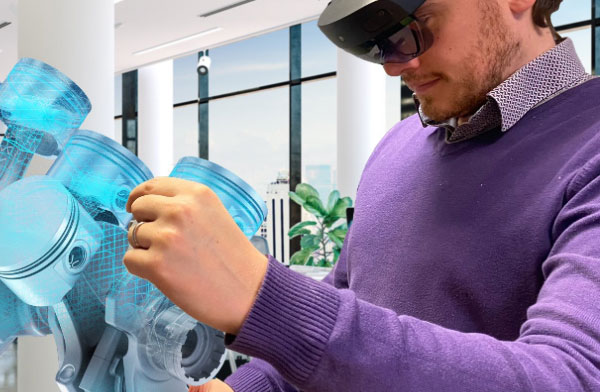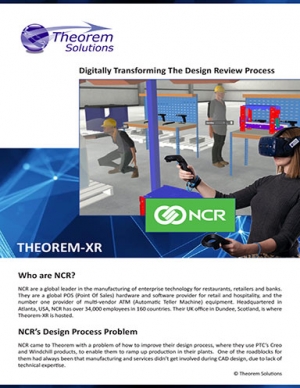Bridge the Gap Between CAD and XR With Release of Theorem-XR
This latest release sees the Theorem-XR portfolio offering support for Microsoft HoloLens 2.

Using Theorem-XR to undertake everyday engineering tasks allows you to visualize your 3D CAD data at full scale and in context, rather than from the confines of a 2D computer screen. Image courtesy of Theorem Solutions.
Latest News
April 23, 2021
The latest version of the Theorem-XR experience suite and Visualization Pipeline are now available from Theorem Solutions for download with next-generation productivity-enhancing features to support the XR user.
This latest release sees the Theorem-XR portfolio offering support for Microsoft HoloLens 2 and to complement this, support for Microsoft Azure Remote Rendering (ARR) technology, enabling high-performance, large-scale data streaming to your HoloLens 2 device. Theorem Solutions is also a member of the Microsoft Mixed Reality Partner Program, enabling the ability to build and deploy these industry solutions that combine its 25-plus years of visualization experience working with CAD.
This release includes the following new features for the Visualization Pipeline:
- Enterprise Deployment—The Visualization Pipeline now supports Data Centre Architecture Support. This enables companies to externalize where the database, data storage and the application is held. Enhanced also to provide support for ADFS on the Visualization Pipeline.
- VRED Pass Through—Round trip VRED data with no loss of Material definition- For those who have high quality models with full materials defined in VRED, the Visualization Pipeline can now programmatically strip the material definitions from a defined model, optimize the 3D geometry and then recombine the material definitions with the newly optimised model, to give a user a lightweight model with the original material definitions applied.
- Unity Asset Bundle Creation Support—Unity asset bundles can now be generated as an output type from the Visualization Pipeline. This allows developers to have a dynamic method of creating 3D assets for consumption in applications. If used in conjunction with Theorems front end API, data can now be extracted, manipulated and created in the output form required all programmatically.
- FBX with Quads Support—Reduced Poly count and file size for downstream workflows. Where possible reducing triangles to squares, removes extra file size.
An overview of these features can be found on the website.
If you aren’t aware of Theorem-XR or what it can do, it enables users to visualize your 3D CAD and PLM assets in context and at full scale, using augmented, mixed and virtual reality technologies on the device of your choice. Theorem-XR is data and device neutral.
Out of the box Theorem-XR offers ‘standard’ engineering-based use case experiences that work collaboratively, enabling remote teams and home-based staff to join and work in an immersive multi-user environment, from anywhere, all that is needed is an internet connection. Even desktop users can join a collaborative session.
Experiences include:
- Design Review
- Factory Layout
- Guides for Training and Education (Author and Operator)
- Visualization
- Visual Digital Twin
The experiences are underpinned by the Visualization Pipeline, which provides a fully automated process that takes 3D data assets directly into Theorem-XR, or for the creation of Unity or Unreal assets for use in internally developed XR solutions. Using the Visualization Pipeline to prepare and optimize CAD data removes the difficulties that can be encountered when trying to get 3D data into XR, and can be done from within the CAD system by simply using the ‘save as’ command, ‘drag and drop’ your data on to the server, or used as part of a PLM integration.
Using Theorem-XR to undertake everyday engineering tasks allows users to visualize your 3D CAD data at full scale and in context, rather than from the confines of a 2D computer screen. Using the latest XR technologies help to reduce costs, improve product quality and support the faster development of products and manufacturing processes across the enterprise by bridging the gap between the digital and the physical.
Sources: Press materials received from the company and additional information gleaned from the company’s website.
More Theorem Solutions Coverage

Subscribe to our FREE magazine, FREE email newsletters or both!
Latest News
About the Author
DE’s editors contribute news and new product announcements to Digital Engineering.
Press releases may be sent to them via DE-Editors@digitaleng.news.







